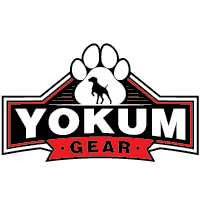Dog training is an essential part of nurturing a well-behaved and balanced canine companion. One of the leading names in the field is Leerburg Dog Training, known for its comprehensive and effective techniques. Leerburg has built a reputation on creating methods that are not only successful but also humane and considerate of the dog's natural instincts and behaviors. This article delves into some of the key training techniques advocated by Leerburg and how they contribute to shaping well-adjusted dogs.
Establishing Leadership and Trust
At the heart of Leerburg's training methods lies the principle of establishing a leadership role while cultivating trust. Dogs are pack animals and thus naturally look for a leader to guide them. Leerburg emphasizes the importance of the owner assuming this role through consistent, calm, and assertive behavior. This doesn't mean dominating the dog, but rather providing clear and confident direction. Trust is built through positive interactions, consistent routines, and understanding the dog's needs and responses.
Marker Training
One of the most effective and widely used techniques in Leerburg's training arsenal is marker training. This method involves using a distinct sound, like a clicker or a verbal cue, to mark the exact moment the dog performs a desired behavior. This mark is immediately followed by a reward, such as a treat or praise. Marker training helps dogs understand precisely which actions are being rewarded, thereby speeding up the learning process and strengthening the desired behaviors.
Prong Collar Use
Leerburg is known for its informed and responsible use of prong collars as a tool for training. Contrary to common misconceptions, when used correctly, a prong collar can be a humane and effective tool for managing and guiding the dog's behavior. Leerburg provides detailed instructions on fitting the collar properly and using it in a way that communicates effectively with the dog, ensuring that it’s a tool for education rather than punishment.
Establishing Obedience Commands
Basic obedience commands are the foundation of a well-trained dog. Leerburg emphasizes clear, consistent, and concise commands such as sit, stay, come, and down. The training process involves teaching these commands in a distraction-free environment before gradually introducing distractions to ensure the dog responds reliably in various situations. The goal is to create a strong communication system between the owner and the dog, which is crucial for managing the dog’s behavior and ensuring its safety.
Behavior Problem Solving
Leerburg also focuses heavily on addressing and resolving behavior problems. Whether it’s aggression, anxiety, excessive barking, or destructive behavior, Leerburg provides tailored strategies to identify the root cause of the problem and address it effectively. This typically involves a combination of changing the dog's environment, modifying the owner's behavior, and using specific training techniques to redirect the dog's actions. The aim is to achieve a harmonious relationship where both the dog and the owner thrive.
Bond-Based Approach
Ultimately, Leerburg’s training methods are centered around building a strong bond between the dog and the owner. Training is seen not just as a means to control the dog but as a way to enhance the relationship. By understanding the dog’s behavior, motivations, and needs, owners can become better leaders and companions, making the training process a rewarding experience for both.
Leerburg Dog Training methods offer a comprehensive approach to dog training that combines leadership, clear communication through marker training, the responsible use of training tools, the establishment of obedience commands, and effective problem-solving strategies. These techniques, grounded in respect and understanding of the canine mind, create an environment where dogs can thrive and develop into well-behaved, confident, and happy companions.

